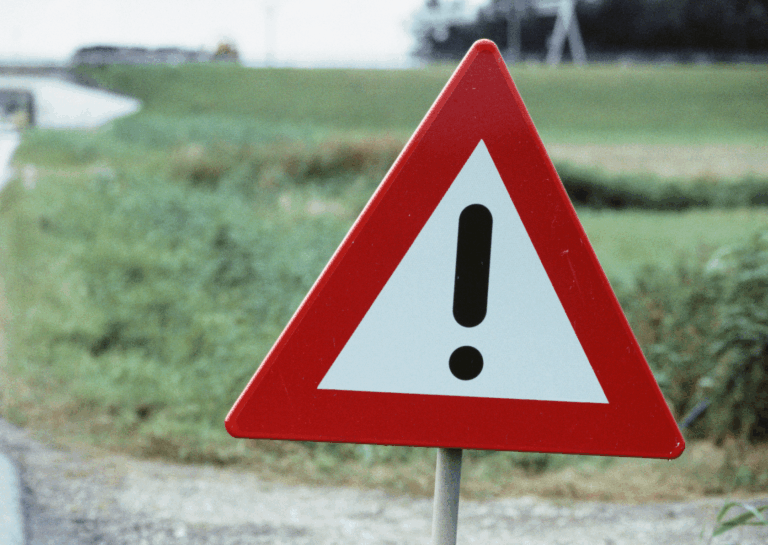The roads in 2025 look familiar, but the challenges behind the wheel are shifting in ways many of us don’t fully realize. Sure, the old dangers like speeding and distracted drivers haven’t gone anywhere, but now we’re sharing lanes with semi-autonomous cars, adapting to new laws, and contending with infrastructure that hasn’t always kept pace with the times.
As driving instructors, parents, and everyday commuters, we know that staying safe isn’t just about rules; it’s about awareness. Let’s take a closer look at the top 10 driving hazards we’re all facing this year and how we can better prepare for them.
Quick Answer: Dangerous Driving Risks to Watch
In 2025, the most common driving hazards include distracted driving, fatigue, tailgating, road debris, poor infrastructure, and misuse of vehicle automation, each requiring sharper awareness and stronger defensive driving habits.
Deep Dive: The 10 Driving Hazards
1. Distracted Driving
Phones, dashboard screens, and even a wandering mind can be just as dangerous as a drunk driver. A few seconds of inattention at highway speeds covers the length of a football field.
- Glancing at a text or fiddling with in-dash screens pulls focus away from the road.
- Colorado’s hands-free law reminds us that phone use behind the wheel isn’t just risky, it’s illegal.
- The safest bet is simple: eyes forward, hands on the wheel, mind on the drive.
2. Drowsy Driving & Fatigue
Fatigue sneaks up slowly, but its effect on reaction time can rival alcohol. Missing just a couple of hours of sleep can double your crash risk.
- Anyone can be affected: shift workers, students, parents.
- Warning signs include heavy eyelids, drifting lanes, or missing exits.
- If you’re fighting to stay awake, you’ve already lost the alertness battle. Pull over, rest, or swap drivers.
3. Tailgating & Speeding
Getting too close or driving too fast might feel like a way to “make up time,” but it only increases your odds of being in a crash. Here’s what to keep in mind instead:
- Riding too close cuts reaction time to almost nothing.
- Speeding multiplies the damage when things go wrong.
- A good rule of thumb: leave at least a three-second gap between you and the car ahead.
- Remember, defensive driving isn’t about showing off; it’s about giving yourself room to stay safe.
4. Road Debris & Sudden Obstacles
From loose tires to ladders tumbling off trucks, debris can appear without warning. Your response determines whether it’s a close call or a chain-reaction crash.
- Tires, tools, and even furniture can show up on the highway without warning.
- Swerving across lanes to avoid debris often causes worse crashes than hitting the object itself.
- Instead, ease off the gas, brake in your lane, and stay steady.
- Calm, controlled moves keep you and everyone else out of trouble.
5. Poor Infrastructure
Not every hazard comes from other drivers. Sometimes the road itself is the problem.
- Potholes can damage tires, rims, and suspensions instantly.
- Faded lane markings make it tough to judge where you belong, especially at night or in the rain.
- Dark, unlit stretches of road cut visibility and reaction time.
- When conditions are uncertain, slow down and respect the right of way to reduce surprises.
6. Construction & Work Zones
Work zones pack a lot of hazards into a small space: narrow lanes, shifting patterns, and people working right beside your vehicle. Staying patient here keeps lives safe.
- Work zones often mean narrow lanes, shifting patterns, and workers just feet away.
- Signs and cones aren’t suggestions; they’re your roadmap through unpredictable territory.
- Slow down, merge early, and watch for sudden stops.
- Above all, remember the people in hard hats and safety vests have the right of way for good reason.
7. Semi-Autonomous System Misuse & Takeover Risks
Cruise control and lane-assist can make driving feel easier, but they’re not magic. Semi-autonomous systems still hand the wheel back to you when things get complicated.
- Common trouble spots: construction zones, heavy rain, or unusual intersections.
- If you’re tuned out when the system disengages, you won’t have time to react.
- Think of automation as a helpful co-pilot, not the captain.
- The driver, you, remains the final line of safety.
8. Situational Awareness Gaps in Autonomous Driving
Semi-autonomous features are designed to help, but they can’t replace a driver’s judgment. The danger comes when we assume the car sees everything.
- Semi-autonomous cars can lull us into passivity.
- They don’t always spot sudden hazards like a cyclist darting out or black ice in the shadows.
- Stay engaged: scan your mirrors, keep your hands close to the wheel, and be ready to step in.
- Technology helps, but awareness is still our responsibility.
9. Pedestrian & Cyclist Vulnerability
Crosswalks and bike lanes don’t make people invincible. Pedestrians step into traffic looking at phones, and cyclists weave around potholes or parked cars.
- Slow down in neighborhoods and at intersections.
- Expect sudden, unpredictable moves from pedestrians and riders.
- Always yield the right of way to people on foot or bike, even if you’re technically first.
- A moment of patience can prevent a lifetime of regret.
10. Automation-Related System Failures
Assistive features save lives, but they’re not immune to glitches. Knowing their limits helps you avoid being caught off guard.
- Features like automatic braking or lane departure warnings aren’t flawless.
- Bad weather, dirty sensors, or shadows can confuse them.
- Some systems brake too hard, others don’t brake at all.
- The safest approach? Use the tech as backup, but never hand over total control.
New Tech, Data, and Policies Redefining Road Safety
Hazards aren’t just about reckless drivers anymore; technology, data, and infrastructure all play a role in shaping today’s risks. Here are a few insights you won’t find on most lists:
- Smarter alert systems: Cars are now integrating driver monitoring systems that track eye movement, eyelid behavior, and steering patterns to catch drowsiness before it turns dangerous. These techniques are detailed in NHTSA’s own safety research, which examines how eye closure and steering variability can indicate impaired driving.
- Data-driven insights: Insurance and fleet companies now analyze billions of miles of U.S. driving data to understand risk patterns. For example, the Lytx 2025 Road Safety Report emphasizes real-world trends in collisions and high-risk behaviors.
- Policy and infrastructure: Now, vehicle standards are addressing crashes before they happen. The National Highway Traffic Safety Administration (NHTSA) has finalized a new regulation requiring automatic emergency braking (AEB) systems, including pedestrian detection, to be standard on all light vehicles by 2029. This move is expected to save at least 360 lives per year and prevent nearly 24,000 injuries annually.
The Federal Highway Administration (FHWA) continues to promote Proven Safety Countermeasures, 28 roadway design strategies (like roundabouts, rumble strips, and pedestrian refuge islands) shown to significantly reduce crashes.
Thinking about hazards this way helps us see beyond the “bad driver” narrative and recognize the bigger system shaping how we all move. And while these changes may start with automakers and policymakers, the end goal is simple: making the daily drive safer for all of us.
Preventive Checklist: What You Can Do Today
We can’t control every road condition, but we can control how we prepare for and respond to them. Think of this checklist as your simple, repeatable routine:
Before you drive:
- Clean windows and mirrors.
- Check lights and tire pressure.
- Make sure driver-assist features are functional and sensors are clear.
On the road:
- Keep a safe following distance.
- Avoid distractions and stay alert in construction zones.
- Adjust speed for pedestrians, cyclists, and weather.
After the trip:
- Report potholes, debris, or unsafe conditions.
- Share observations with local authorities so hazards get fixed for the next driver.
Final Thoughts on Road Hazards Every Driver Faces in 2025
The truth is, the top driving hazards of 2025 aren’t brand new; they’re familiar risks wearing new clothes. Distractions now come from glowing dashboards as much as phones, fatigue still sneaks up when we push our limits, and technology can lull us into a false sense of security. Add in unpredictable roads, pedestrians, careless driving, and the occasional flying hubcap, and it’s clear why defensive driving remains our best tool. We can’t control every pothole or every impatient driver, but we can control how we prepare and how we respond. When we treat the road like a shared space instead of a battlefield, we tip the odds in everyone’s favor. At the end of the day, safety is less about luck and more about attention.

